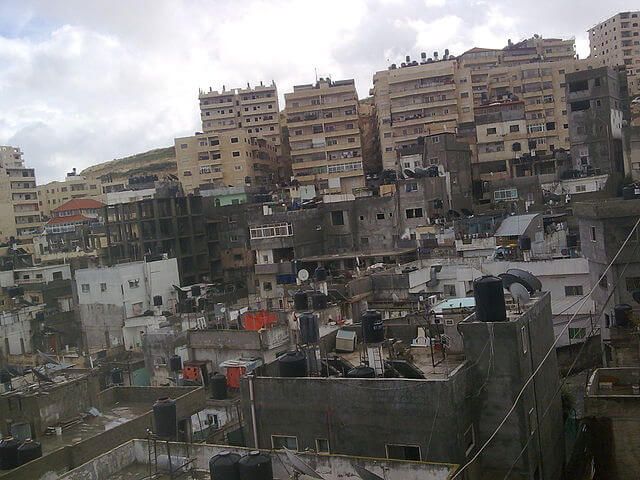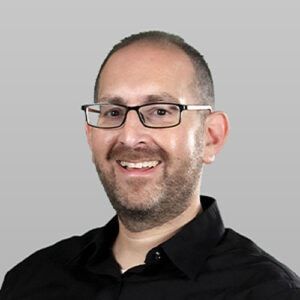UPDATE
Following complaints from HonestReporting and its readers, the New York Times public editor has responded in a column admitting that “the wiser choice would have been to make clear the role of Breaking the Silence in the project. Disclosure ahead of time is better than questions afterward.”
Click here to read the full commentary and our reaction.
* * *
The New York Times magazine publishes an in-depth article by author Rachel Kushner, describing her experience of visiting the Shuafat refugee camp in the eastern part of Jerusalem.
Kushner writes that she was “invited on an extensive tour of the occupied West Bank, including East Jerusalem, and was asked to choose a subject to write about, for a book to be published next year.”
When asked in an accompanying Q and A, Kushner expands:
I had been invited, totally unexpectedly, by Ayelet Waldman, Mario Vargas Llosa and Michael Chabon, to take a trip there, in mind to contribute to a book of essays that Chabon and Waldman are editing on the occupation of the West Bank.
Join the fight for Israel’s fair coverage in the news
What neither Kushner nor the New York Times includes is the information that the visit and the book is a joint initiative with the Breaking the Silence organization. As Haaretz reported in April 2016:
The authors’ visit to the Hamra checkpoint was part of a weeklong tour of the West Bank by Breaking the Silence, the controversial Israeli group that collects and distributes testimonies of soldiers who served in the occupied territories. In addition to Waldman, Menasse and Brooks, several other literary stars attended the tour: American novelists Dave Eggers, Rachel Kushner and Michael Chabon (Waldman’s husband and a Pulitzer Prize winner) and Nigerian author Helon Habila. More than a dozen other writers will be taking similar trips in the coming months in research for an upcoming book of essays.
The Washington Post also reported on the writers’ Breaking the Silence tour, saying:
The book is designed to mark the 50-year anniversary of the Israeli occupation of the Palestinian territories — and to make a political splash.
Breaking the Silence is itself a highly politicized organization that collects anonymous testimonies of Israeli soldiers of alleged and most often unsubstantiated misdemeanors or “war crimes” that it presents to a mainly foreign audience as a means of fighting Israel’s “occupation.”

As journalist Jake Wallis Simons recounted back in 2013 when he conducted interviews with BtS staff:
It was only a hunch at first. But later, the bias of the organisation became clearer. During a break between interviews, I asked Yehuda Shaul, one of the founders of the organisation, how the group is funded. It was with some surprise that I learned that 45 per cent of it is donated by European countries, including Norway and Spain, and the European Union. Other donors include UNICEF, Christian Aid and Oxfam GB. To me this seemed potentially problematic.
As is the case in all democracies, the IDF is an organ of the state, not a political decision-maker. If the goal of Breaking the Silence was simply to clean up the Israeli military, it wouldn’t be such a problem. Instead, the aim is to “end the occupation”, and on this basis it secured its funding.
It appeared, therefore, that these former soldiers, some of whom draw salaries from Breaking the Silence, were motivated by financial and political concerns to further a pro-Palestinian agenda. They weren’t merely telling the truth about their experiences. They were under pressure to perform.
Indeed, I later discovered that there have been many allegations in the past that members of the organisation either fabricated or exaggerated their testimonies.
Why does the New York Times not acknowledge that Rachel Kushner wrote her article with a clear agenda? Given that Kushner was exposed to only one side of the issue due to the involvement of Breaking the Silence, it explains why she would not have spoken to anyone from the Jerusalem municipality that bears responsibility for Shuafat.
It would be naive on our part not to acknowledge that the conditions in Shuafat are unacceptable. Nonetheless, it is also pertinent to point out that, as Avi Issacharoff writes, local residents estimate the number of weapons held by people here is the thousands. This partly explains why the Jerusalem municipality and the Israeli police are loathe to put their lives at risk to give services to a neighborhood whose residents, some of whom have committed terrorist acts in recent times, act with hostility towards Israelis. In addition, the camp is largely serviced (evidently not very well) by UNRWA.
We already know that the New York Times presents a one-sided view of Israel and the Israeli-Palestinian conflict. But to publish an article like Rachel Kushner’s without the transparency that professional journalism requires is highly problematic.
HonestReporting will be taking this up with the New York Times public editor and you can too by sending your emails to [email protected].


